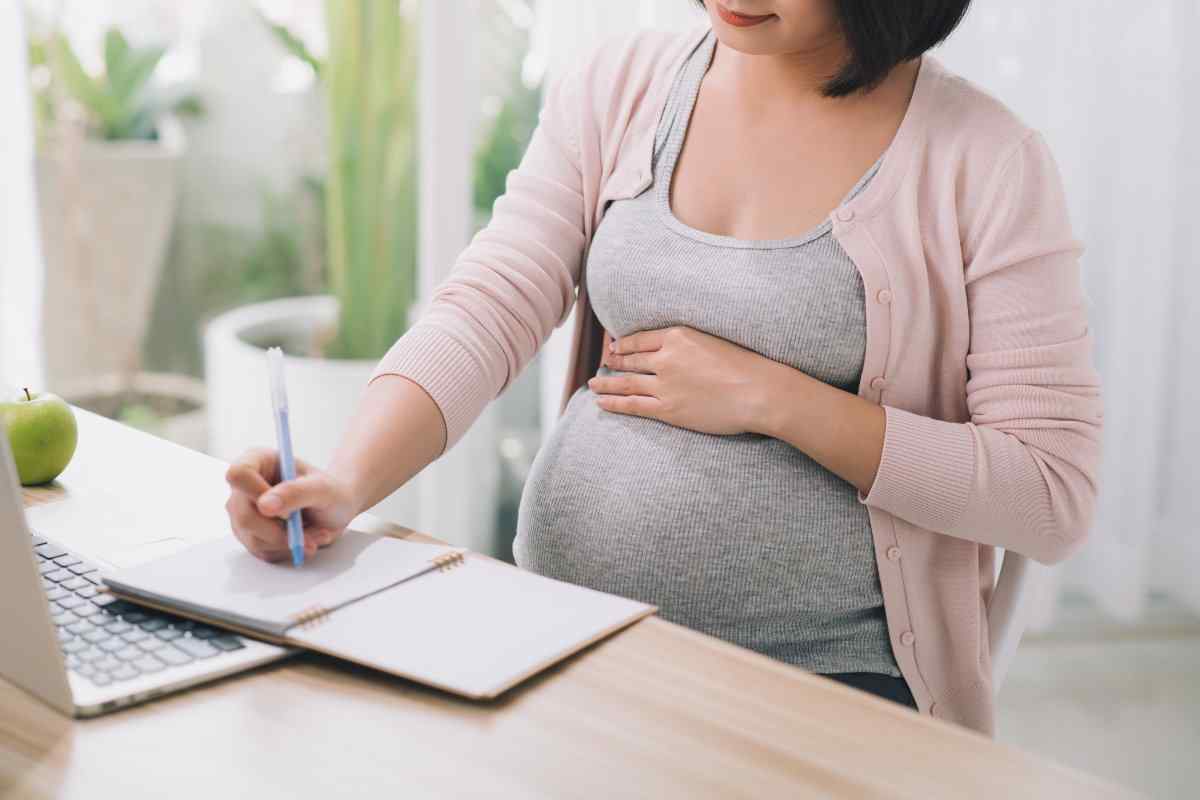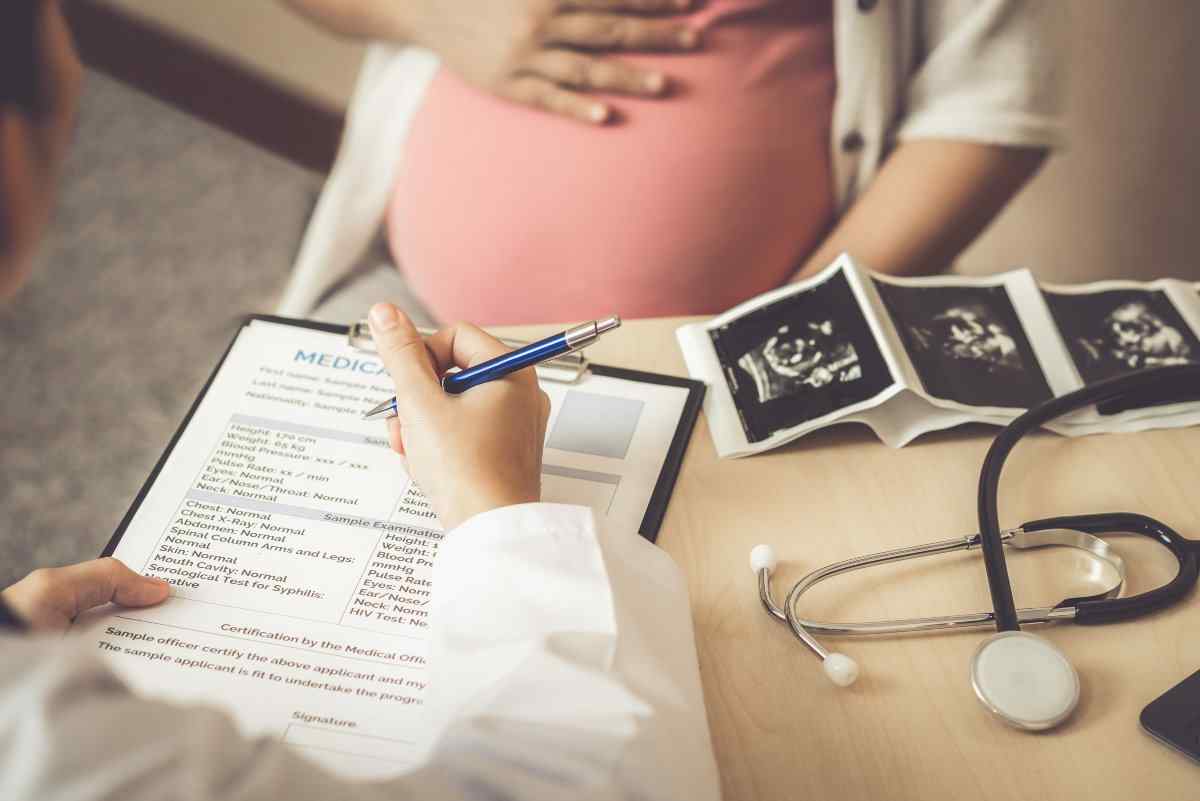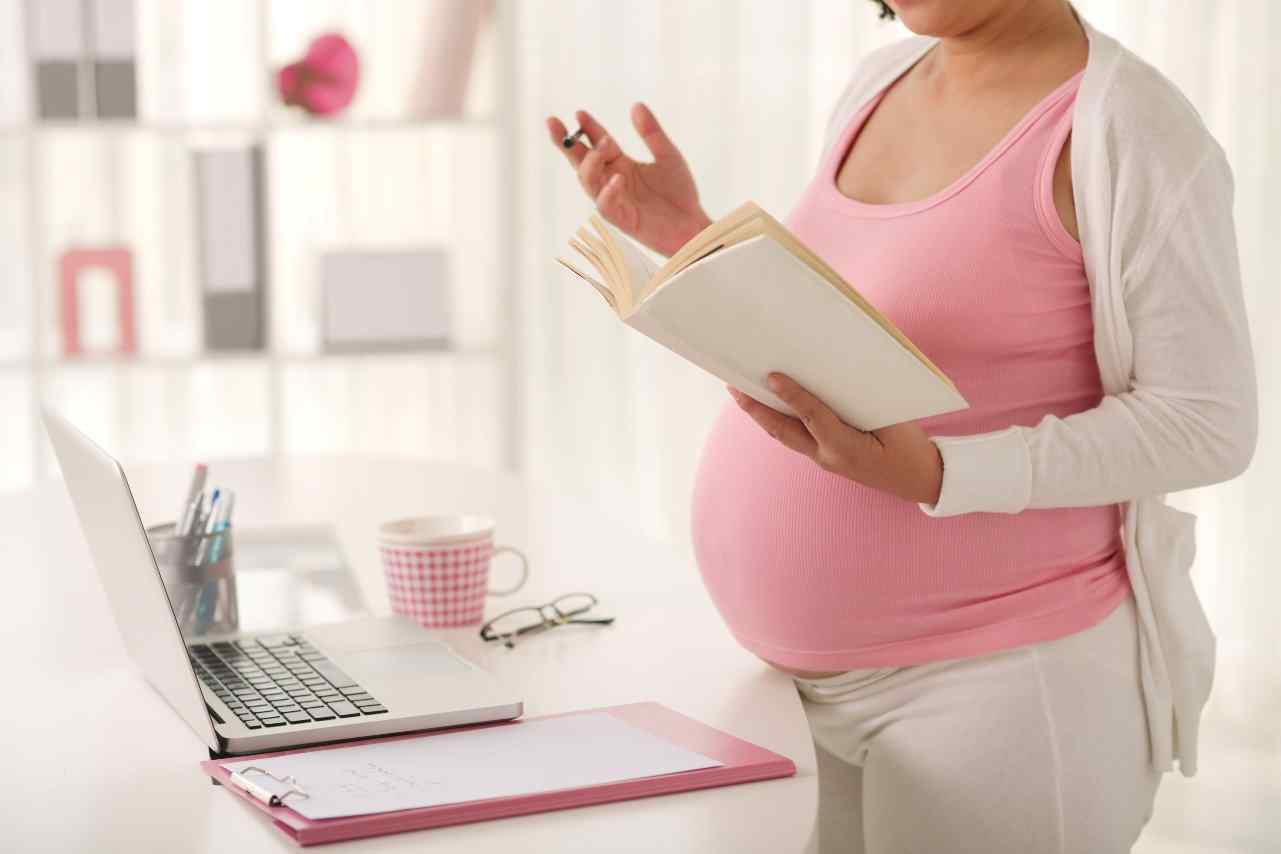What Benefits Can I Claim When Pregnant and Unemployed?
In the United States, a normal pregnancy can cost around $30,000 to $50,000 without insurance. With coverage, it averages around $4,500. Moreover, many tests that expectant mothers must take aren’t fully covered by insurance. This makes being pregnant with limited financial resources even more daunting. On the bright side, many government and private organizations provide cash assistance for pregnant mothers who may not have the financial security to support their families.
Types of Grants
 A grant is a sum of money that is gifted for a particular purpose. Applicants must meet the required qualifications and financial needs to be eligible. Depending on the program, your eligibility, and financial needs, the types of grants you can get may include:
A grant is a sum of money that is gifted for a particular purpose. Applicants must meet the required qualifications and financial needs to be eligible. Depending on the program, your eligibility, and financial needs, the types of grants you can get may include:
- Money, vouchers, or debit cards for food and clothing
- Health insurance and medication
- Housing and utility assistance
- Car seat and safety training
- Parenting classes and counseling
- Tax credit
- College education
Required Documents
Most grant programs ask for the following documents when filling out their application form:
- Proof of income or unemployment
- Proof of U.S. citizenship or permanent residency
- Government-issued ID
- Proof of pregnancy
Government Grants
The United States federal government offers maternity grants for pregnant women, unemployed, or low-income people who need financial help. Government grants are managed through state or local offices such as the Public Welfare Services. They are funded by federal agencies such as the Department of Health and Human Services (DHHS) and the U.S. Department of Agriculture (USDA).
Women, Infants, and Children Program (WIC)
The WIC program can help mothers who are pregnant, breastfeeding, or caring for a child with nutritional and health needs. The program offers checks, electronic cards, or vouchers to purchase nutritious food such as infant formula, fruits, and vegetables. It also provides:
- Free parenting classes
- Breastfeeding classes and support
- Healthy eating education
- Car seat safety courses
The program offers financial support for up to six months after giving birth. Breastfeeding mothers may qualify for up to one year. Eligible children up to the age of five can also continue receiving assistance.
Your income should be at or below 185% of the U.S. poverty level and meet other WIC requirements to be eligible for assistance. For example, for a family of four, the U.S. poverty level is $26,500 in 2021. However, the figures are different for Alaska and Hawaii. Also, if you or a family member participate in another benefit program such as Medicaid, you will automatically be eligible for the WIC program.
Your state’s Department of Health administers the program. Your doctor’s office can also help you apply for WIC.
Medicaid
 If you are pregnant and don’t have health insurance, you may be eligible for Medicaid. Medicaid is a state-administered program for unemployed or low-income families. It can be very beneficial in helping unemployed and pregnant women obtain essential health services, increasing the chances of a healthy pregnancy and baby. Even though the Federal government sets the guidelines for eligibility, they can differ from state to state.
If you are pregnant and don’t have health insurance, you may be eligible for Medicaid. Medicaid is a state-administered program for unemployed or low-income families. It can be very beneficial in helping unemployed and pregnant women obtain essential health services, increasing the chances of a healthy pregnancy and baby. Even though the Federal government sets the guidelines for eligibility, they can differ from state to state.
Like WIC, your income should be below a specified percentage of the U.S. poverty guideline to be eligible for assistance. The grant covers the mother and the baby during pregnancy, labor, delivery, and postpartum for up to 60 days. It also often covers the cost of a car seat.
The program is administered and granted through your state’s Department of Health, its Welfare Services office, or social services for pregnant mothers.
Children’s Health Insurance Program (CHIP)
If you don’t qualify for Medicaid because your family earns more money than the poorest households but not enough to buy private insurance, consider applying to the CHIP program to get healthcare for you and your baby. Like Medicaid, you will be covered throughout your pregnancy, labor, delivery, and 60 days after you give birth. After those 60 days, your baby will be automatically enrolled in Medicaid and continue getting healthcare for their first year.
Temporary Assistance for Needy Families (TANF)
The TANF program also provides grants for pregnant women. Its goal is to provide temporary financial assistance for those who are in need while at the same time helping them find a job to better support themselves. Those who are pregnant and need money can benefit from this program to buy food, clothing, medical supplies, and pay utilities.
Eligible candidates will also receive job counseling, career guidance, grants for education, and computer access to search for jobs.
Each state administers the program locally, and you can access grants through your local Public Welfare office.
Supplemental Nutrition Assistance Program (SNAP)
 Low or no-income families who don’t have the necessary cash for food can apply for SNAP benefits. Like WIC, the SNAP program provides families with funds to purchase foods, including baby formula. This program was previously known as the food stamp program. The groceries can be bought using an Electronic Benefits Transfer (EBT) card. Certain restaurants accept EBT cards, as well. The eligibility requirements vary from one state to another, and they are updated annually. In general, an unemployed mother-to-be must have a gross monthly income under 130% of the poverty level and a net monthly income under 100% of the poverty level. You can apply for SNAP benefits in the state you currently live in by visiting your local SNAP office.
Low or no-income families who don’t have the necessary cash for food can apply for SNAP benefits. Like WIC, the SNAP program provides families with funds to purchase foods, including baby formula. This program was previously known as the food stamp program. The groceries can be bought using an Electronic Benefits Transfer (EBT) card. Certain restaurants accept EBT cards, as well. The eligibility requirements vary from one state to another, and they are updated annually. In general, an unemployed mother-to-be must have a gross monthly income under 130% of the poverty level and a net monthly income under 100% of the poverty level. You can apply for SNAP benefits in the state you currently live in by visiting your local SNAP office.
Low-Income Energy Assistance Program (LIHEAP)
Unemployed, pregnant women may qualify for the program and get assistance in paying for their home energy bills, weatherization, and energy-related home repairs. For the past 40 years, LIHEAP has supported millions of low-income households nationwide by lowering their home heating and cooling costs. You can apply for the program by contacting your state social services agency.
Health Resources and Services Administration (HRSA)
HRSA provides low-income families with free health care all over the U.S. Review their guidelines to check if you and your family may qualify for assistance. If you are eligible for medical assistance, reach out to the qualifying clinic and fill out the necessary forms.
The Title V Maternal and Child Health Services Grant may be one of the best free programs for expectant mothers. This program aims to help lower-income households access quality health care, including prenatal and postnatal care, and reduce infant mortality and the incidence of preventable diseases. Every year, Congress awards grants through the United States Department of Health and Human Services (DHHS) to each state. Pregnant women can access this grant by visiting their community hospital or a health center.
Housing Voucher Program/Section 8 Housing
 The Housing Choice Voucher Program, also referred to as Section 8 housing, helps low-income earners, including expectant mothers, with rental expenses. The Department of Housing and Urban Development (HUD) manages the program and directly pays a housing subsidy on behalf of the qualified applicant’s family to the landlord. It covers around 70% of the monthly rent. The applicant then must pay the difference between the subsidy and the total amount of rent due. You can register for the housing choice voucher program through your state’s public housing agency.
The Housing Choice Voucher Program, also referred to as Section 8 housing, helps low-income earners, including expectant mothers, with rental expenses. The Department of Housing and Urban Development (HUD) manages the program and directly pays a housing subsidy on behalf of the qualified applicant’s family to the landlord. It covers around 70% of the monthly rent. The applicant then must pay the difference between the subsidy and the total amount of rent due. You can register for the housing choice voucher program through your state’s public housing agency.
Unemployment Insurance/Unemployment Compensation
Pregnant workers who have become unemployed through no fault of their own might be eligible to get unemployment insurance financed by the U.S. Department of Labor. The unemployment benefits program provides temporary cash assistance when you lose your job. Check your state’s program to find out about any additional requirements.
Childcare Subsidies and Vouchers
These government programs help low-income families access affordable daycare services. Each state receives funding from the federal government for the subsidy program. The grant covers a portion of the overall childcare expenses, and the applicant must pay the difference. Eligibility requirements differ in each state. However, all applicants must be employed, enrolled in an approved job training program, or pursuing their education to take advantage of the daycare services offered under this program.
Internal Revenue Service (IRS) Grants
The IRS offers three government grants for pregnant women: schedule A deductions (form 1040), Healthcare Flexible Spending Accounts (FSA), and Health Savings Accounts (HSA).
Expectant mothers can use the Schedule A IRS form to claim itemized deductions on their tax return for medical and dental expenses that exceed 7.5% of their adjusted gross income.
Healthcare Flexible Spending Accounts (FSA) are offered through your employer. This program allows you to pay tax-free medical expenses, such as prenatal care, labor, delivery, and postpartum costs.
Health Savings Accounts (HSA) allow pregnant women who have a qualifying high-deductible health insurance plan to pay for any maternity-related expenses using pre-tax dollars.
You may also be eligible for a child tax credit and get $3,600 per child under the age of six. This means that you may get a monthly payment of $300.
Federal Education Grants
 If you need financial assistance to pursue your education while pregnant and unemployed, the United States Department of Education offers education grants for those in need. Federal education grants include Pell Grant, Federal Supplemental Educational Opportunity Grant (FSEOG), Teacher Education Assistance for College, and Higher Education grant (TEACH).
If you need financial assistance to pursue your education while pregnant and unemployed, the United States Department of Education offers education grants for those in need. Federal education grants include Pell Grant, Federal Supplemental Educational Opportunity Grant (FSEOG), Teacher Education Assistance for College, and Higher Education grant (TEACH).
The Pell Grant is need-based funding awarded to undergraduate students whose family’s total income is below $50,000. The program was created in 1972 and has been awarding grants since the 1973 to 1974 school year. It is the most extensive grant program offered to undergraduate students by the department of education. Students can apply for the grant online by completing the Free Application for Federal Student Aid (FAFSA).
The Federal Supplemental Educational Opportunity Grant is awarded to students who show strong financial need. Grants range between $100 and $4,000 per year and are often rewarded in addition to the Pell grant. Students can apply for assistance online by completing the FAFSA.
Students can also receive up to $4,000 by applying to the Teacher Education Assistance for College and Higher Education grant. In return, upon graduation, the candidates must agree to teach in a school in a low-income area for four years.
Non-Profit Grants
Besides government-funded programs, there are non-profit organizations that offer free help for pregnant mothers with low-income. Here are some organizations that are striving to build healthy communities and provide critical services.
National Diaper Bank Network
Diapers are a basic need for all infants, yet they can be costly to purchase. Expectant mothers struggling financially may receive assistance obtaining free diapers thanks to the National Diaper Bank Network. The non-profit works with community diaper banks around the nation to help low-income families get free diapers. There are over 200 diaper banks in the U.S. that serve around 280,000 babies and youngsters every month. Locate the nearest bank in your area and contact them to check your eligibility.
Circle of Health International (COHI)
Circle of Health International works with women-led local and community-based organizations to provide women and their families with quality care in times of crisis. Founded in 2004, the non-profit has helped more than 3.25 million women and children in critical conditions. The organization provides resources and support to asylum seekers through rent assistance, legal aid, mental health, medical attention, and support.
Safe Kids Worldwide
Safe Kids Worldwide aims to prevent and protect kids from unintentional injuries, which is the leading cause of death among children and teens. The non-profit operates with an extensive network of more than 400 coalitions in the United States. If you can’t afford a car seat, Safe Kids provides families with free car seats, provides education on safe use, and checks the installation of car seats. They may also offer other safety products such as smoke detectors, carbon monoxide detectors, and helmets.
Feeding America
 If you didn’t qualify to get assistance from WIC or SNAP, you could contact your local Feeding America food bank. There are more than 200 food banks and 60,000 food pantries that feed more than 46 million people. The non-profit may help pregnant women by providing baby formulas, fruits and vegetables, and shelf-stable foods for their families.
If you didn’t qualify to get assistance from WIC or SNAP, you could contact your local Feeding America food bank. There are more than 200 food banks and 60,000 food pantries that feed more than 46 million people. The non-profit may help pregnant women by providing baby formulas, fruits and vegetables, and shelf-stable foods for their families.
March of Dimes
March of Dimes was initially founded in 1938 by President Franklin D. Roosevelt to fight polio. Today, the non-profit focuses on the prevention of congenital disabilities, preterm birth, and infant mortality. It offers different programs to help people in need. For example, the March of Dimes NICU Family Support Program provides comfort and information to families with a baby in the Neonatal Intensive Care Unit (NICU).
Religious Charities
Multiple religious organizations may offer financial assistance to pregnant women to avoid abortion. For example, religiously affiliated Crisis Pregnancy Centers offer counseling, medical services, formula, and other baby items to expectant mothers in need.
Catholic Charities USA (CCUSA) may also help if your pregnancy is unplanned. They will provide pregnancy counseling and adoption services. Contact their local office in your state to find out what help you can get.
The Salvation Army is an evangelical part of the universal Christian Church and has a worldwide membership of over 1.7 million. The faith-based organization provides families and children in need with food, shelter, and housing.
Sum up
According to the United Nations’ World Population Prospects, the U.S. birth rate has increased 0.09% between 2020 and 2021. Also, according to a study done by the Guttmacher Institute, unintended pregnancy rates are highest among low-income women, with incomes less than 200% of the federal poverty level.
Pregnancy grants for unemployed women come in many forms. If you don’t have insurance, you may be eligible for Medicaid or CHIP. If you struggle to pay for food and other necessities, you can apply to WIC and SNAP. If you need support to pay your rent, you can use the Housing Voucher Program. You do not have to limit yourself to applying for only one. Plus, grants are not loans, so you don’t have to pay anything back.





